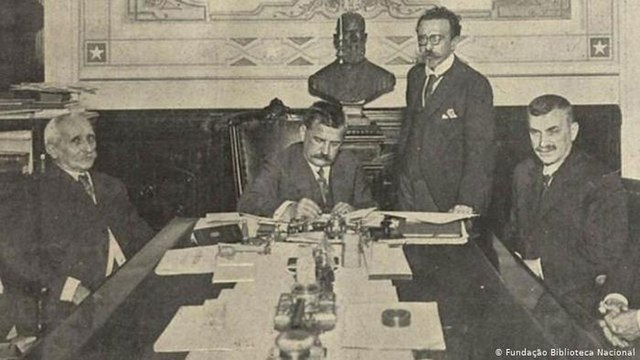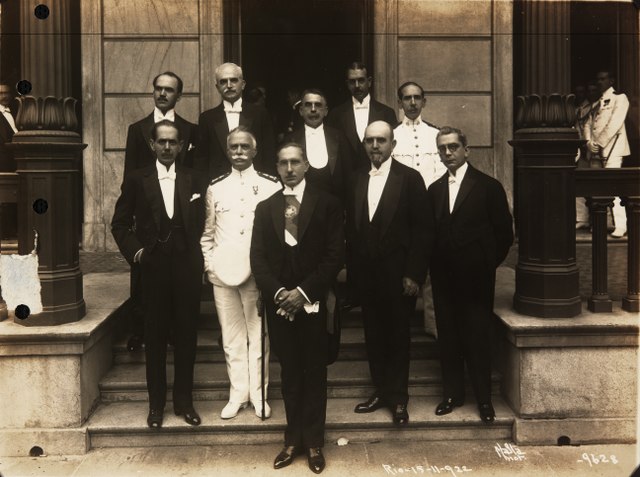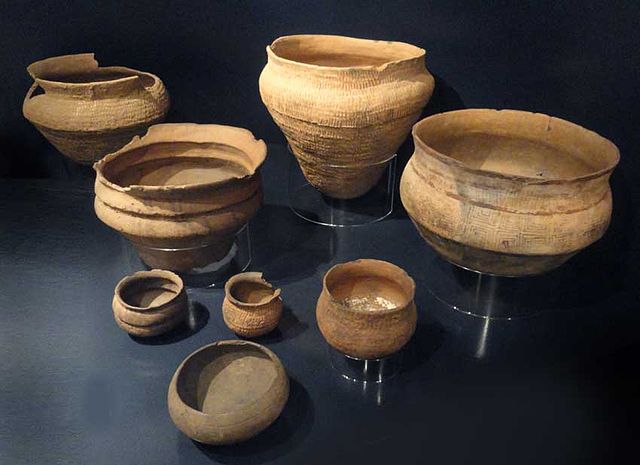The First Brazilian Republic, also referred to as the Old Republic, officially the Republic of the United States of Brazil, refers to the period of Brazilian history from 1889 to 1930. The Old Republic began with the deposition of Emperor Pedro II in 1889, and ended with the Brazilian Revolution of 1930 that installed Getúlio Vargas as a new president. During the First Brazilian Republic, Brazil was dominated by a form of machine politics known as coronelism, in which the political and economic spheres were dominated by large landholders. The most powerful of such landholders were the coffee industry of São Paulo and the dairy industry of Minas Gerais. Because of the power of these two industries, the Old Republic's political system has been described as "milk coffee politics."
The Proclamation of the Republic, by Benedito Calixto.
President Venceslau Brás declares war on the Central Powers, October 1917.
Constitution of the United States of Brazil, 1891. National Archives of Brazil.
President Artur Bernardes (1922–1926) and ministers of state, 1922. National Archives of Brazil.
Before the arrival of the Europeans, the lands that now constitute Brazil were occupied, fought over and settled by diverse tribes. Thus, the history of Brazil begins with the indigenous people in Brazil. The Portuguese arrived to the land that would become Brazil on April 22, 1500, commanded by Pedro Álvares Cabral, an explorer on his way to India under the sponsorship of the Kingdom of Portugal and the support of the Catholic Church.
Image: Cerâmica Tupi Guarani 5
Image: Indian Soldiers from the Coritiba Province Escorting Native Prisoners
Image: Slavery in Brazil, by Jean Baptiste Debret (1768 1848)
Image: Navio negreiro Rugendas 1830








